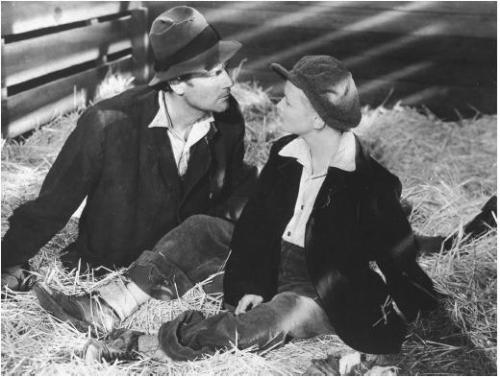 While in St. Louis for Thanksgiving, I was talking about being a wanderer, adventurer and came up with my new job: 21st century hobo. Then of course, as I am always anxious to be up on the necessary skills for a given job, I decided to research the actual history of the hobo.
While in St. Louis for Thanksgiving, I was talking about being a wanderer, adventurer and came up with my new job: 21st century hobo. Then of course, as I am always anxious to be up on the necessary skills for a given job, I decided to research the actual history of the hobo.
An ethical code was created during the 1889 National Hobo Convention in St. Louis Missouri. They had a convention! How wild is that? But I think the rules would be a good start for society today.
1. Decide your own life, don’t let another person run or rule you.
2. When in town, always respect the local law and officials, and try to be a gentleman (kind and considerate) at all times.
3. Don’t take advantage of someone who is in a vulnerable situation, locals or other hobos.
4. Always try to find work, even if temporary, and always seek out jobs nobody wants. By doing so you not only help a business along, but ensure employment should you return to that town again.
5. When no employment is available, make your own work by using your added talents at crafts. (Be creative!)
6. Do not allow yourself to become a stupid drunk and set a bad example for locals treatment of other hobos. (This should be a rule in all bars and on every college campus in America.)
7. When jungling in town, respect handouts, do not wear them out; another hobo will be coming along who will need them as bad, if not worse than you.
8. Always respect nature, do not leave garbage where you are jungling. (Environmentalists!)
9. If in a community jungle, always pitch in and help.
10. Try to stay clean, and boil up wherever possible.
11. When traveling, ride your train respectfully, take no personal chances, cause no problems with the operating crew or host railroad, act like an extra crew member.
12. Do not cause problems in a train yard, another hobo will be coming along who will need passage through that yard.
13. Do not allow other hobos to molest children, expose to authorities all molesters; they are the worst garbage to infest any society.
14. Help all runaway children, and try to induce them to return home.
15. Help your fellow hobos whenever and wherever needed, you may need their help someday.
 There are plenty of homeless people in the US now (600,000+), but they do not seem to live by the code of the hobo. Then again our whole of society has changed. Acting like a gentleman is rare even in “polite” society.
There are plenty of homeless people in the US now (600,000+), but they do not seem to live by the code of the hobo. Then again our whole of society has changed. Acting like a gentleman is rare even in “polite” society.
An interesting site for the new hobo is here.  Apparently, the hobos of yore had a system of signs to alert one another of what was going on around a particular location. For instance:
Apparently, the hobos of yore had a system of signs to alert one another of what was going on around a particular location. For instance:
* A cross signified “angel food,” that is, food served to the hobos after a party.
* A triangle with hands signified that the homeowner had a gun.
* Sharp teeth signified a mean dog.
* A square missing its top line signified it was safe to camp in that location.
* A top hat and a triangle signified wealth.
* A spearhead signified a warning to defend oneself.
* A circle with two parallel arrows meant to get out fast, as hobos were not welcome in the area.
* Two interlocked humans signified handcuffs. (i.e. hobos are hauled off to jail).
* A Caduceus symbol signified the house had a doctor living in it.
* A cat signified that a kind lady lives here.
* A wavy line (signifying water) above an X meant fresh water and a campsite.
* Three diagonal lines meant it wasn’t a safe place.
* A square with a slanted roof (signifying a house) with an X through it meant that the house had already been “burned” or “tricked” by another hobo and wasn’t a trusting house.
* Two shovels, signifying work was available (Shovels, because most hobos did manual labor).
I am now on the look-out for new ciphers of the 21st century hobo. It is a bit hard to distinguish any real signs from general graffiti. Clever hobos!
And it turns out that since 1900, The National Hobo Convention has been held annually on the second weekend of August in the town of Britt, Iowa. It is the largest gathering of “hobos, rail-riders, and tramps, who gather to celebrate the American traveling worker.” I wonder how many people arrive there by rail.
Okay, I am not really going to start riding the rails. I need a computer and a comfortable place to sleep. But the freedom that the hobo life suggests does appeal. Traveling at will, no responsibilities, few possessions, a romantic rebellious existence, however, the reality of homelessness is pretty scary. I have spent a good deal of my adult life in a nomadic fashion though, so there is a hobophilia to me. Maybe my attraction to the life is an expression that travel and adventure need to be a part of whatever I do. So how to be that 21st century hobo? The downsized life with fewer possessions and less structure are the beginning.

If having a hitch-hiker/traveler lifestyle off and on in my 70’s /80″s long ago and far away -but sometimes seems like yesterday – youth qualifies, then I have, indeed, been there!
Home periodically to clean-up, re-charge, work odd jobs to make some $ to eat, or sleep inside someplace on occasion ( RE: weather, need-for-clean or uninterrupted sleep)…
Enjoyable read …stumbled on for an art exchange I”m in reviewing hobo signs….never knew about the convention!GREAT!!Off to read it!Yhanks!
What I would like to figure out is how to have that freedom with a true sense of security. May not be possible.
I like the research you’ve done!
I’ve been living as a professional hobo since 1989. I’ve ridden over 340,000 miles of track since then, as well.
I have some edditional information at my webook site at: http://www.webook.com/project/life-times-of-a-professional-hobo
Also, rail cars that hoboes ride at: http://www.webook.com/project/rail-cars-that-hoboes-ride
I just started my blog today. So, it will take me a while to get mine started here.
Great work you’ve done!
~ “Shoestring” ~~~~~~~~
Please sign me up for your blog. I’d love to read about your adventures!